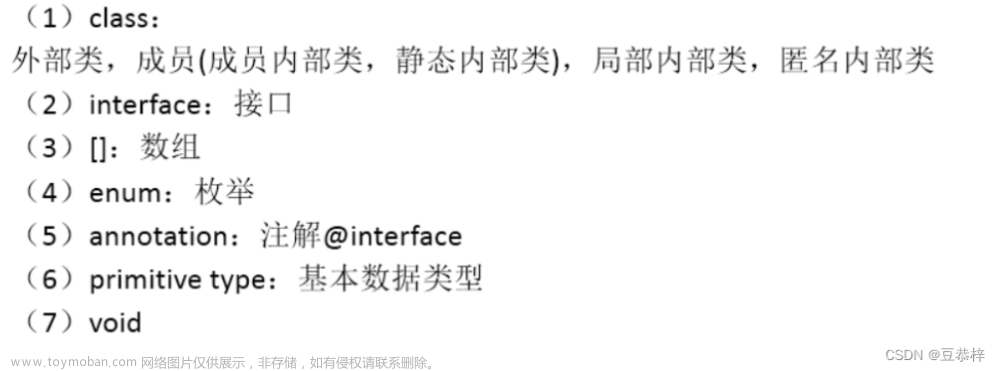准备工作:首先创建一个学生类。
import java.io.Serializable;
public class Student implements Serializable {
String name;
int age;
int score;
public Student() {
}
public Student(String name, int age, int score) {
this.name = name;
this.age = age;
this.score = score;
}
@Override
protected Object clone() throws CloneNotSupportedException {
return super.clone();
}
public String getName() {
return name;
}
public void setName(String name) {
this.name = name;
}
public int getAge() {
return age;
}
public void setAge(int age) {
this.age = age;
}
public int getScore() {
return score;
}
public void setScore(int score) {
this.score = score;
}
}
1.通过new关键字来创建对象。
Student s1=new Student("张三",15,78);2.通过反射的构造方法来创建对象。
//反射
Constructor<Student> declaredConstructor = Student.class.getDeclaredConstructor(String.class, int.class, int.class);
Student stu = declaredConstructor.newInstance("熊爱明", 15, 89);
System.out.println(stu);不懂反射的同学可以看这里:你还不会反射吧,快来吧!!!_明天更新的博客-CSDN博客
3.通过克隆来创建对象。
import com.sun.xml.internal.messaging.saaj.util.ByteInputStream;
import sun.misc.Unsafe;
import java.io.*;
import java.lang.invoke.MethodHandle;
import java.lang.invoke.MethodHandles;
import java.lang.invoke.MethodType;
import java.lang.reflect.Constructor;
public class Test {
public static void main(String[] args) throws Throwable {
//克隆
Student student=new Student("张三",15,78);
Object clone = student.clone();
System.out.println(clone);
}
}
4.通过反序列化来创建对象。(Student类实现Serializable接口)文章来源:https://www.toymoban.com/news/detail-680312.html
import com.sun.xml.internal.messaging.saaj.util.ByteInputStream;
import sun.misc.Unsafe;
import java.io.*;
import java.lang.invoke.MethodHandle;
import java.lang.invoke.MethodHandles;
import java.lang.invoke.MethodType;
import java.lang.reflect.Constructor;
public class Test {
public static void main(String[] args) throws Throwable {
//反序列化
byte[] bytes = serialize(student);
Student s2 = (Student)deserialize(bytes);
System.out.println(s2);
}
private static byte[] serialize(Student student) throws IOException{
ByteArrayOutputStream baos=new ByteArrayOutputStream();
ObjectOutputStream oos = new ObjectOutputStream(baos);
oos.writeObject(student);
byte[] bytes = baos.toByteArray();
return bytes;
}
private static Object deserialize(byte[] bytes) throws IOException,ClassNotFoundException{
ObjectInputStream ois = new ObjectInputStream(new ByteArrayInputStream(bytes));
return ois.readObject();
}
}
5.通过MethodHandle API来创建对象。文章来源地址https://www.toymoban.com/news/detail-680312.html
//MethodHandle API
MethodHandle constructor = MethodHandles.lookup().findConstructor(Student.class, MethodType.methodType(void.class, String.class, int.class, int.class));
Student s = (Student)constructor.invoke("李四", 45, 89);
System.out.println(s);到了这里,关于Java创建对象的方式你知道几种???的文章就介绍完了。如果您还想了解更多内容,请在右上角搜索TOY模板网以前的文章或继续浏览下面的相关文章,希望大家以后多多支持TOY模板网!









